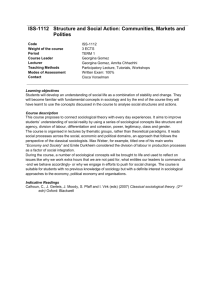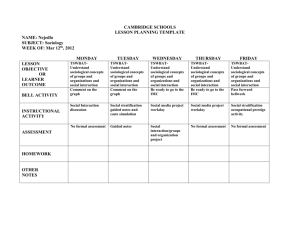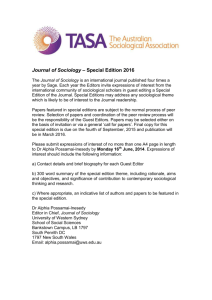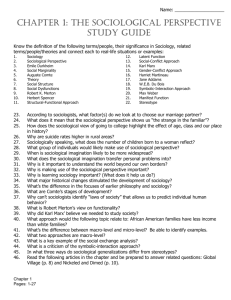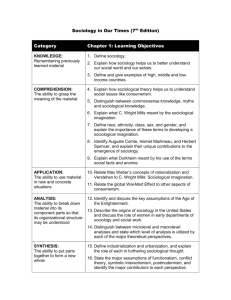Sociology in the News
advertisement
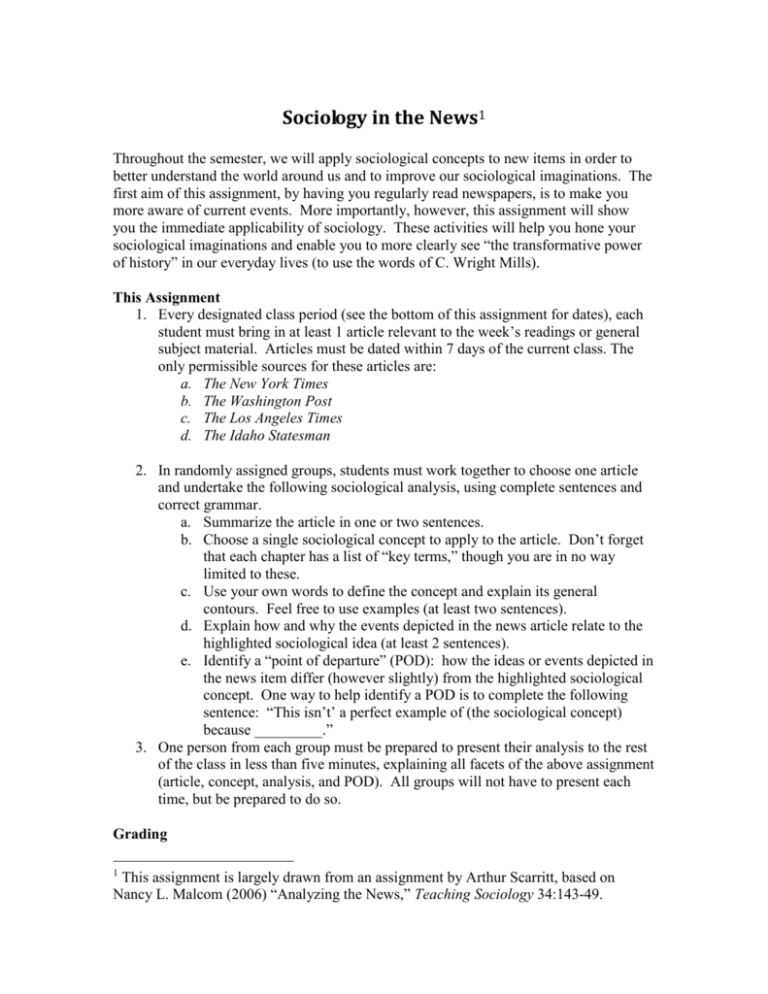
Sociology in the News1 Throughout the semester, we will apply sociological concepts to new items in order to better understand the world around us and to improve our sociological imaginations. The first aim of this assignment, by having you regularly read newspapers, is to make you more aware of current events. More importantly, however, this assignment will show you the immediate applicability of sociology. These activities will help you hone your sociological imaginations and enable you to more clearly see “the transformative power of history” in our everyday lives (to use the words of C. Wright Mills). This Assignment 1. Every designated class period (see the bottom of this assignment for dates), each student must bring in at least 1 article relevant to the week’s readings or general subject material. Articles must be dated within 7 days of the current class. The only permissible sources for these articles are: a. The New York Times b. The Washington Post c. The Los Angeles Times d. The Idaho Statesman 2. In randomly assigned groups, students must work together to choose one article and undertake the following sociological analysis, using complete sentences and correct grammar. a. Summarize the article in one or two sentences. b. Choose a single sociological concept to apply to the article. Don’t forget that each chapter has a list of “key terms,” though you are in no way limited to these. c. Use your own words to define the concept and explain its general contours. Feel free to use examples (at least two sentences). d. Explain how and why the events depicted in the news article relate to the highlighted sociological idea (at least 2 sentences). e. Identify a “point of departure” (POD): how the ideas or events depicted in the news item differ (however slightly) from the highlighted sociological concept. One way to help identify a POD is to complete the following sentence: “This isn’t’ a perfect example of (the sociological concept) because _________.” 3. One person from each group must be prepared to present their analysis to the rest of the class in less than five minutes, explaining all facets of the above assignment (article, concept, analysis, and POD). All groups will not have to present each time, but be prepared to do so. Grading 1 This assignment is largely drawn from an assignment by Arthur Scarritt, based on Nancy L. Malcom (2006) “Analyzing the News,” Teaching Sociology 34:143-49. You will get full credit for participating in the group exercise. If you are not in class, you cannot get this credit. These exercises can never and in no way be made up at another time. Make sure that all participants’ names are on the assignment when you turn it in at the end of class. Example: “Police Work.” Special Supplement to the Savannah Morning News, March 19, 2002. This article discusses the work and different jobs of police officers. It shows that their jobs vary in levels of interest and difficulty. Gender segregation refers to the pattern whereby men and women are situated in different jobs throughout the labor force. Many jobs in our society are thought of as either a man’s or a woman’s job. For example, nurses are predominantly women and police officers are mostly men. There are more women in the teaching profession than men, and more men caching athletics than women. This does not mean that the opposite sex cannot do the job; it only suggests that people generally lean towards a more traditional role when choosing a profession. This article implies that gender segregation is prevalent on the police force. Few women are shown as officers. Furthermore, it appears that the male police officers hold the more difficult and more interesting jobs. This suggests that a man is more equipped for the more challenging jobs on the force. A woman officer featured in the article works with the children at the Boy’s and Girl’s Club, a safe place for the kids and the female officer. My point of divergence is that even though men are concentrated in this occupation, this article does feature some female police officers. Women are found on the police force, and some of these women are well-respected and high-ranking police officers.

